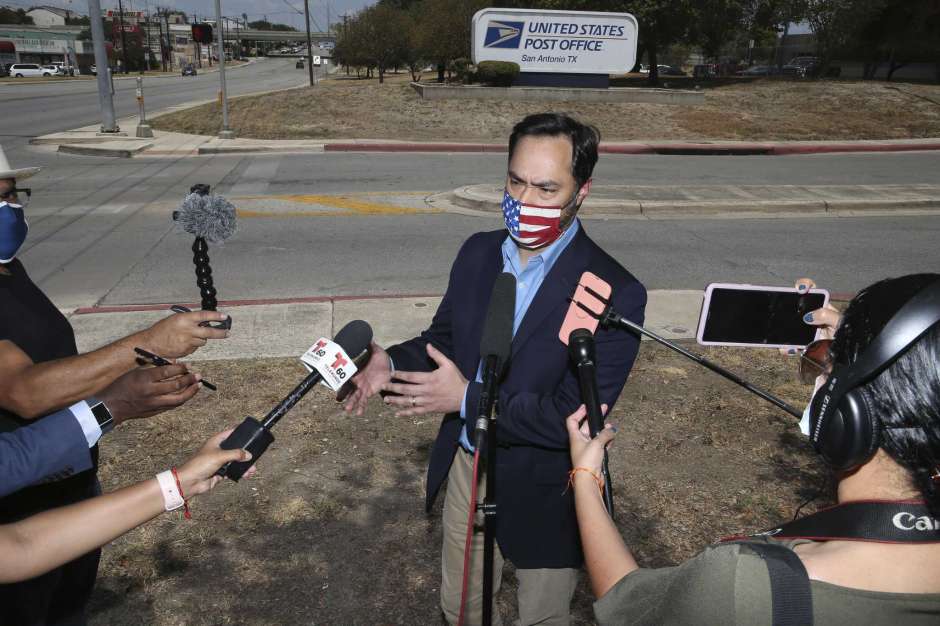‘Image Making’ in Hollywood, Publishing at Issue
John C. White, NABJ Co-Founder, Dies at 78
Lauren Williams to Offer Black ‘Civic Journalism’
Homepage photo by Jerry Lara/San Antonio Express-News
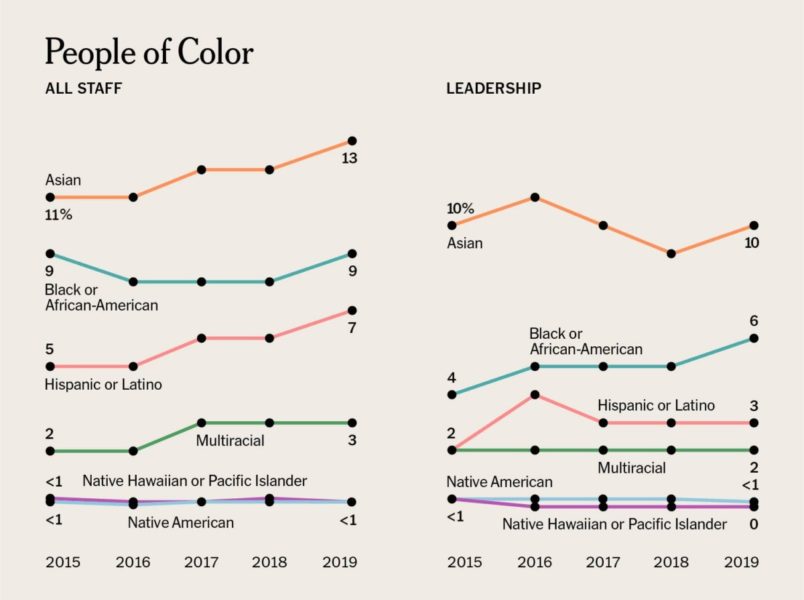
‘Image Making’ in Hollywood, Publishing at Issue
- Nov. 23 update: Six members of the Congressional Hispanic Caucus met with three executives from The New York Times, including CEO Meredith Kopit Levien, but no one from the news department was present, Alex Sarabia, a spokesman for Rep. Joaquin Castro, D-Texas, chairman of the Caucus, told Journal-isms by telephone on Monday. The decision about whether to include news executives rested with the business-side leaders, Sarabia said.
- Sarabia termed the hour-long meeting “candid” and called it a “first step.” He said he hoped the news department would be included in future sessions.
The Congressional Hispanic Caucus has scheduled a meeting Monday with the leadership of The New York Times “to discuss the lack of adequate Latino representation at the Times,” Caucus chair Joaquin Castro, D-Texas, (pictured) tweeted on Friday.
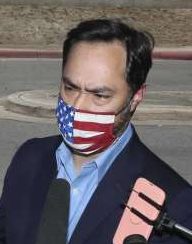 It is part of an ongoing investigation by the Caucus into portrayals of Latinos in entertainment and news media, Alex Sarabia, a communications director for Castro, told Journal-isms by telephone on Saturday.
It is part of an ongoing investigation by the Caucus into portrayals of Latinos in entertainment and news media, Alex Sarabia, a communications director for Castro, told Journal-isms by telephone on Saturday.
Castro has said, “Hollywood and other media industries like publishing are the main image-creating and narrative defining industries in American society. The stories these industries tell — or don’t tell — about Latinos affect not just Latinos working in the industries but affect every Latino in America.
“It’s long past time that the federal government examine this issue of system racism and exclusion of Latinos in industries like publishing and Hollywood.”
The Government Accountability Office agreed to a request from the Hispanic Caucus and Rep. Carolyn B. Maloney, D-N.Y., who chairs the House Committee on Oversight and Reform, to compile an updated report on the representation of Latinos in employment and management positions in film, television and publishing.
The report is also to analyze the enforcement of federal equal opportunity requirements on those industries by the U.S. Equal Employment Opportunity Commission and Department of Labor.
“This is just the beginning of Congress taking a closer look at these industries,” Castro said in his October statement.
Sarabia said the Caucus has already met with NBC and the Los Angeles Times, though its meetings with Hollywood have received more attention.
He said the meeting with New York Times leadership, which is open to all 38 members of the caucus, is intended to establish a “baseline of data” and to tell the Times executives why the issue is important to them.
Sarabia also said that in a related initiative, the Hispanic, Black and Asian Pacific American caucuses are jointly monitoring the ethnic makeup of congressional staff hires and tracking the diversity of the witnesses who testify.
A New York Times spokesperson did not respond to a request for comment, but in 2019, the Times reported a Latino newsroom staff of 7 percent, and said the group comprised 3 percent of Times leadership.
The U.S. Census showed Latinos or Hispanics to be 18.5 of the population in 2019, William H. Frey reported July 1 for the Brookings Institution.
Also in 2019, the Times shut down its Spanish language site, NYT En Español, which catered specifically to a Latin American audience.
“The site was run in Mexico City and published original, Latino-led content every day,” Melanie Pineda, editor-at-large at the Washington Square News, New York University’s student newspaper, wrote then. “Many Latino journalists expressed their disappointment with the decision, calling it a great loss for Latino journalists and audiences alike.”
Among those speaking publicly was NYT en Español’s own editorial team.
Moreover, the New York Times unit of the News Guild of New York, answering the question, “Is There Hidden Bias In Performance Evaluations?” recently concluded, “There is a strong pattern of racial disparity in reviews.
“Employees of color were disproportionately likely to receive low ratings, while white employees were more likely to be rated highly. he discrepancies most clearly affect employees who identify as Black and Hispanic.”
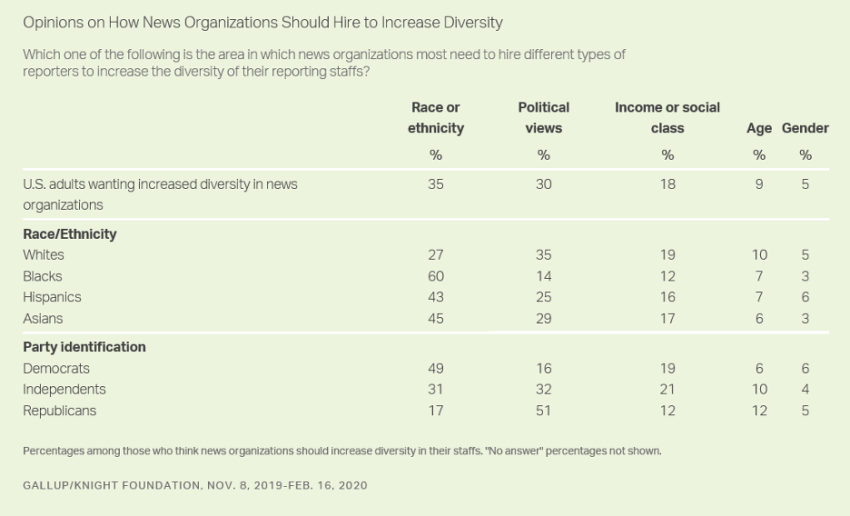
A Knight Foundation survey this year found, “Racial minorities wanting increased diversity in newsrooms are more likely to place the priority on racial/ethnic diversity compared to whites.
A majority of Blacks (56%) and more than four in 10 Hispanics (43%) and Asians (47%) most want to see increased racial diversity in news organizations, compared with just 26% of Whites.”
As with the general diversity issue in the news media, at bottom is the quest for accuracy.
In late October, Times politics reporter Jennifer Medina, who is Latina, wrote with nuace under the headline, “Though a majority of Latino voters favor Democrats, Hispanic men are a small but enduring part of Trump’s base. Those supporters see him as forceful, unapologetic and a symbol of economic success.”
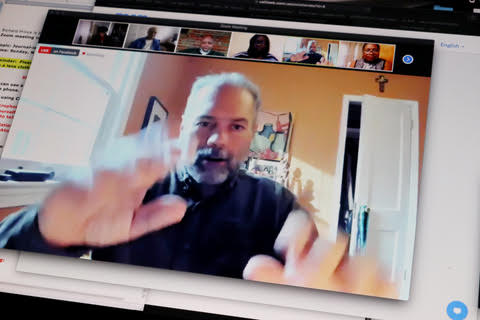 While the Congressional Hispanic Caucus did not cite the Times’ election coverage, others have criticized the news media in general for covering “the Latino vote” as if it were a monolith, surprised that many subgroups voted Republican.
While the Congressional Hispanic Caucus did not cite the Times’ election coverage, others have criticized the news media in general for covering “the Latino vote” as if it were a monolith, surprised that many subgroups voted Republican.
Veteran journalist Ray Suarez (pictured, by Sharon Farmer/sfphotoworks), best known for his work on the “PBS NewsHour,” said at the Journal-isms Roundtable (video) this month that whites would never be covered the same way.
Suarez was particularly irked that Latino journalists were not among the network analysts of “the Latino vote.” (Post-election, many outlets have been more specific.)
On “Democracy Now!” two days after Election Day, co-host Juan Gonzalez analyzed the returns and criticized the developing “false narrative” that “Latinos and, to some extent, African Americans shifted more toward Donald Trump in this election, that they underperformed for Joe Biden and the Democratic Party.”
Gonzalez concluded, “The main story is that people of color, especially Latinos, flocked to the polls in numbers that far exceeded what the experts had expected, while the total number of votes cast by white Americans barely increased from the last presidential election, and, most importantly, that white voters, including white women, voted at higher percentages for Trump this year than they did in 2016.
“So, how come none of the experts are asking why white voters underperformed [for] the Democratic Party?”
Among ethnic groups, the racial reckoning that followed the police killing of George Floyd, an African American, in Minneapolis on Memorial Day has largely affected other African Americans.
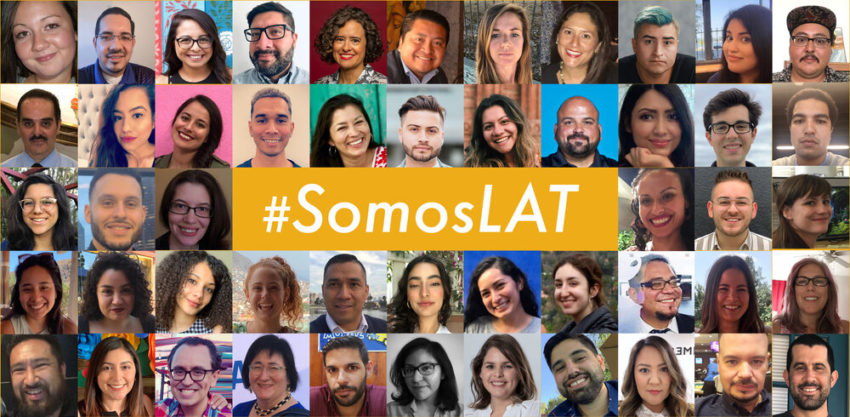
At the L.A. Times, however, the reckoning included Hispanics.
Latino staff members wrote management in July, “For much of its history, the Los Angeles Times has covered the Latino community in dehumanizing ways, painting us as criminals or victims or simply ignoring us.” The caucus made demands.
The Times responded with a mea culpa that also included African Americans, Asian Americans and Native Americans.
“Today, 38% of the journalists on our staff are people of color,” the paper editorialized on Sept. 27. “We know that is not nearly good enough, in a county that is 48% Latino and in a state where Latinos are the largest ethnic group. We know that this acknowledgment must be accompanied by a real commitment to change, a humility of spirit and an openness of mind and heart.”
Last week, the paper reported that “The Los Angeles Times and Tribune Publishing have agreed to pay $3 million to resolve a class-action lawsuit brought by a multiethnic group of journalists who alleged that they were paid less than their white male counterparts.”
Another development took place last week as well, however. “Los Angeles Times food critic Patricia Escarcega denounced the newspaper in a Twitter thread on Sunday, accusing her employers of paying her significantly less than her white male counterparts,“ Jeremy Fuster reported for The Wrap.
“Why hire the first Latinx restaurant critic in the history of the L.A. Times and then pay them so much less for doing the exact same work?” Escárcega tweeted. “I refuse to let this discrimination stand. It is immoral, unethical, and illegal.”
- National Hispanic Media Coalition: The National Hispanic Media Coalition, Free Press, Center for American Progress, and Allies Put Pressure on Facebook to Resolve Spanish Language Disinformation Gap
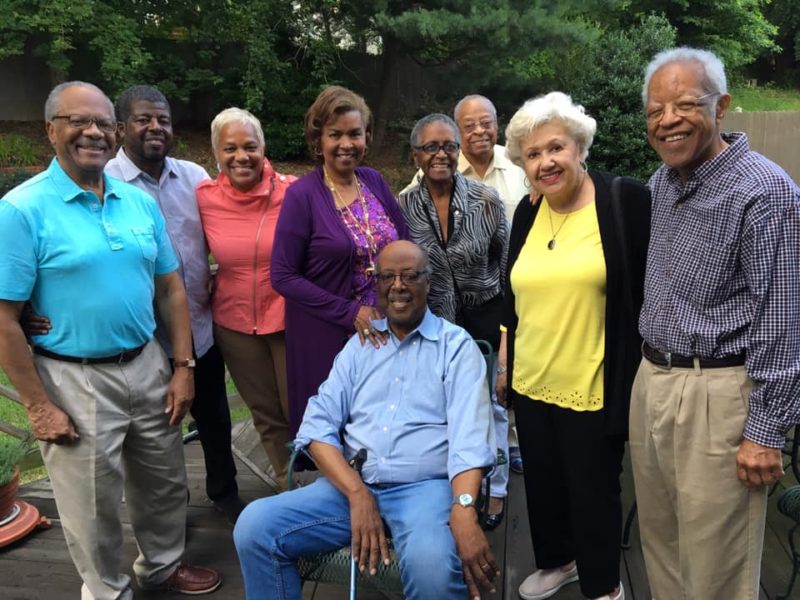
John C. White, NABJ Co-Founder, Dies at 78
John C. White, a veteran journalist who worked in Washington, Baltimore and Chicago and was a co-founder of the National Association of Black Journalists, died Saturday in a Baltimore hospital, NABJ reported. He was 78 and had neck cancer, according to a family friend.
White told his own story in a 1991 interview with Wayne Dawkins for his book, “Black Journalists: The NABJ Story,” published in 1997:
” ‘It was a good ride,’ This was White’s reflection on 23 years in the news business.
“I chose it (journalism). I am a native of Baltimore.
” ‘I always loved reading. I was not a good student, but I always read. Writing seems to follow reading.
” ‘I wrote in the Air Force out of boredom. I came out of the Air Force in 1965 and started at Morgan State College.
” ‘I was interested in becoming a ‘serious’ writer, another James Baldwin. My sophomore year I saw a news writing class in the catalogue. A requirement was to write for the school newspaper.
” ‘It was instant love. I saw my name in the paper and I loved it. I received a Westinghouse internship to work at WJZ-TV. At the end of the summer I became the weekend news producer.
” ‘I went to the Afro-American (Baltimore) for nine months and covered cops. Then I went to The Evening Sun (Baltimore).
” ‘It (my career) was a lot of fun. I spent a lot of time on both sides of the journalism fence.’ White was a reporter at The Chicago Tribune and the Philadelphia Daily News.
“In the late 1980s, he was press secretary for Washington, D.C. Mayor Marion Barry. White returned to journalism, to WJLA-TV in Washington. When interviewed, he was recently laid off because of budget cuts.
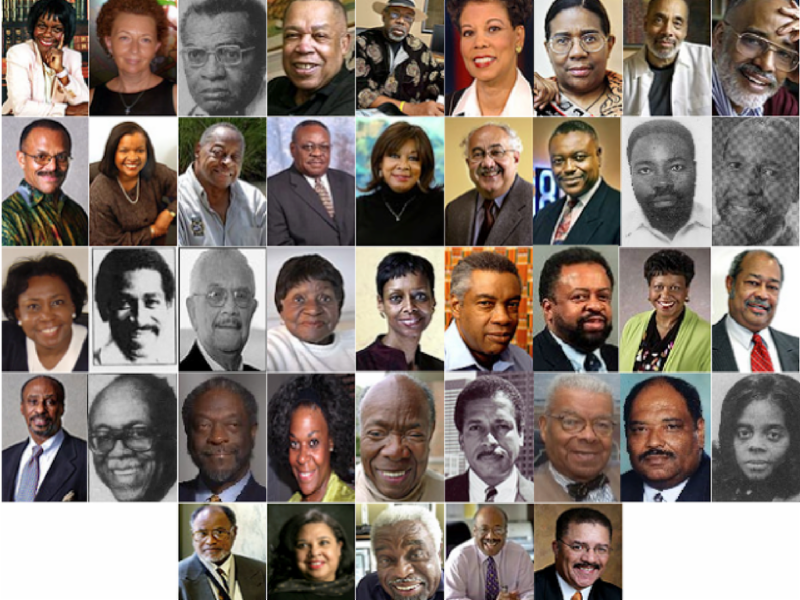
“Before NABJ’s founding in December 1975, ‘I remember sort of chaos. Whenever we covered a black meeting there would be after-hour rap sessions about conditions in the media. Tom Johnson, Paul Delaney and Ed Blackwell were the vets. Nothing came out of it. Gary, Ind., 1972 was the first time I covered a national (black) story. There was a lot of word-of-mouth (from black reporters about starting an organization.) It sounded like a good idea.
” ‘I was one of three people who started the Association of Black Media Workers (ABMW, Baltimore)’
“The others were DeWayne Wickham and Marie Cook of the Afro-American. Cook is related to the Murphy family, owners of the Afro newspapers.
” ‘I was treasurer the first four years: DeWayne was president. Marie was secretary.
” ‘The national thing was an outgrowth of what we did in Baltimore. I was working for The Washington Star and living in Baltimore.
“After everybody filed (their stories on the black political convention in December 1975) we got together.’ “
- National Association of Black Journalists Chicago Chapter: Eugene Stanback Memorial Scholarship

Lauren Williams to Offer Black ‘Civic Journalism’
Lauren Williams, the editor-in-chief and senior vice president of Vox.com who has worked at The Root, Mother Jones and AOL Black Voices, is leaving Vox.com to start Capital B, “a local and national nonprofit news organization serving Black audiences, in mid-2021,” Williams announced Friday.
At the same time, Ezra Klein, co-founder and editor-at-large of the political news website owned by Vox Media, said he, too, is leaving the company. Klein is joining the New York Times as columnist and podcast host. He hired Williams in 2014.
Williams told her Twitter followers Friday that she is leaving Vox in February.
“The 6+ years I’ve spent helping to build Vox into what it is today have been the most rewarding of my career,” she said. “I love Vox, and I love my team. There’s only one thing that could compel me to leave: the opportunity to create something I’ve dreamed about for a decade.”
She continued in her Twitter feed:
“So I’m thrilled to share that my friend @ko_616 and I are launching Capital B, a local and national nonprofit news organization serving Black audiences, in mid-2021,” reference to Akoto Ofori-Atta.
“Capital B will provide high-quality civic journalism tailored to Black communities across the country, aimed at serving audiences the essential information needed to live their lives.
“I met @ko_616 in 2010 when we began working together at The Root. We developed a particular vision for a new and different kind of Black news outlet. Back then, it wasn’t meant to be, and we weren’t ready to lead something like that even if it was.
“But a lot can happen in ten years. I ended up at Vox, where I went from managing editor, to executive editor, to editor-in-chief, to, finally, editor-in-chief and senior vice president, overseeing all editorial and business operations.
“@ko_616 became a JSK Fellow at Stanford University, where she focused on the challenges facing Black digital press and newsroom diversity. She then went on to be Managing Editor at @teamtrace.
“This year, as #blacklivesmatter protests spread across the US, the election and pandemic roared ahead, and thousands of journalists lost jobs, we decided to retool our vision to match this crucial moment for our country, and for our profession. And this time, it was meant to be. . . .”
A Comic That’s as Serious as a Virus
November 19, 2020
‘Comics Journalist’ Tackles Race Disparity
Paynes’ Malcolm X Bio Wins National Book Award
L.A. Times Food Critic Alleges Pay Disparity
Smith, Starks Among 300 ESPN Layoffs
New News Network to Target the ‘Underserved’
Obama Book Already Drawing Blowback
HBO Adaptation of Coates Book Debuts Saturday
CNN Fills Slots Created After Floyd Killing
Short Takes

‘Comics Journalist’ Tackles Race Disparity
Early beliefs in some quarters that Blacks could not get COVID-19 — which contributed to disproportionate harm to communities of color — are part of a historical pattern of racism that African Americans themselves were helping to spread, according to research now illuminated by an artist who uses what he calls “comics journalism.”
The cartoonist-journalist is Josh Neufeld, “whose comics have covered a wide range of topics, including public health crises, academic research and journalism itself,” Carmen Nobel wrote Monday for Journalist’s Resource.
Neufeld put into comic form some of the findings of three doctors of color who traced the false idea that Blacks were immune from infectious diseases to similar tropes during the 1918 influenza pandemic, the 1862-1867 smallpox outbreak and as far back as the 1792-1793 yellow fever epidemic.
In the yellow fever case, “white physicians, such as Benjamin Rush, asked black community leaders Absalom Jones and William Gray to ‘furnish nurses to attend the afflicted’ because of the erroneous assumption that blacks could not contract the disease,” the health workers — Lakshmi Krishnan, MD, PhD, S. Michelle Ogunwole, MD and Lisa A. Cooper, MD, MPH — wrote in Annals.org in June, republished in the Annals of Internal Medicine in September.
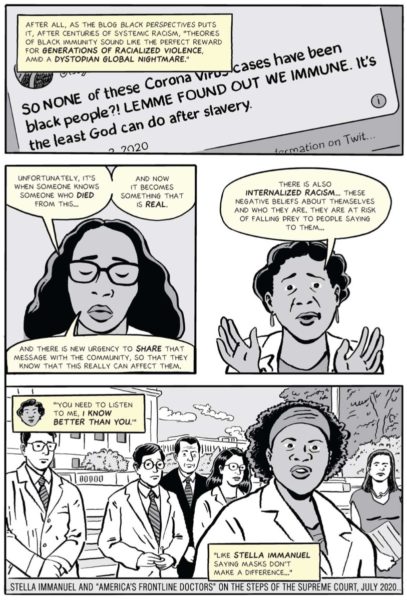
“Before 1918, epidemic disease already exacted a disproportionate toll on black Americans, who, for example, accounted for an overwhelming number of the 50,000 deaths in the 1862–1867 smallpox epidemic,” they added.
The authors said, “Rebuttals to these innate immunity theories circulated in the black print media. . . . In December 1918, African American columnist William Pickens debunked the claim of a white West Virginian who claimed the ‘influenza germ had shown that God was partial in favor of black people.’ Pickens countered that for whites, ‘when Negroes die faster, it is often escribed [sic] to their inferiority,” but if spared, ‘well, that proves they are not human like the rest of us. ‘ ”
African Americans played into the racist beliefs when they repeated these claims of immunity.
In April, Terry Gross, host of WHYY-FM’s “Fresh Air,” transmitted to NPR stations from Philadelphia, asked actress Kerry Washington how she felt when Black people asked her whether African Americans could get COVID.
“It speaks to kind of how separate our communities remain in this country . . .,” Washington replied. “There’s a huge gap between worlds in a lot of ways that we don’t always — if we watch the news and we don’t see somebody who looks exactly like us, we don’t necessarily think that it has to do with us.”
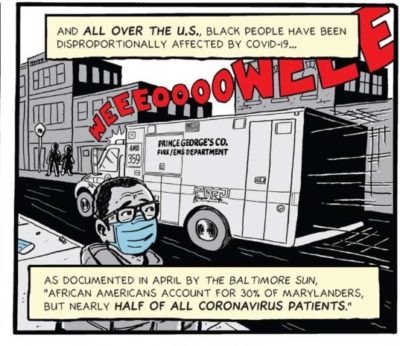
In his comic, Neufeld shows how such sentiments were expressed this year on social media.
The three journal authors attribute misinformed Black responses to the pandemic to “critical structural inequities and health care gaps” that “have historically contributed to and continue to compound disparate health outcomes among communities of color.” The news media played a role in the earlier epidemics, they said. Racist coverage “provided justification for draconian public health ordinances and restrictive housing covenants that maintained housing color lines and prevented black Chicagoans from leaving overcrowded conditions.”
The doctors praise the “resilience” of communities of color despite those obstacles and say the solution today is “health equity.”
“Perhaps the most important conclusion drawn from an analysis of the 1918 influenza pandemic is that minority communities are resilient, are resourceful, and find restoration in community,” they say.
Unsurprisingly, the authors see a role for the media, in partnership with communities. “Within the African American community, specific communication barriers, augmented by a lack of COVID-19–related demographic data, contributed to underestimating the pandemic’s effect. Misinformation and recycled, erroneous narratives about black immunity circulated through social media. . . . Historical distrust of biomedicine amplified these effects. . . .
“However, as available data emerged outlining COVID-19’s devastating disparities, black organizations, leaders, and media outlets aggressively campaigned to dispel myths, implored citizens to heed sanitation and containment advice, and advocated for community resources. This kind of community-led strategy has repeatedly been critical in counteracting national failures to protect minorities.”
-
Rodney A. Brooks, history.com: Why African Americans Were More Likely to Die During the 1918 Flu Pandemic (Oct. 5)
-
Patrice Peck, Wired: What Writing a Pandemic Newsletter Showed Me About America

Tamara Payne, accepting the National Book Award for nonfiction, said, ”I really wish my father was here for this.” Paynes’ Malcolm X Bio Wins National Book Award
Les Payne, the journalistic icon whose biography of Malcolm X was released posthumously last month, won the National Book Award for nonfiction Wednesday along with his daughter, co-author Tamara Payne, who completed the work and was her father’s primary researcher.
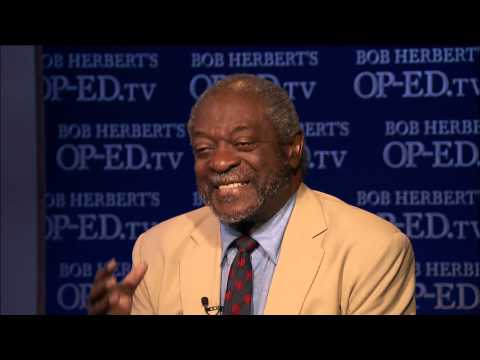 The judges wrote, “Les (pictured) and Tamara Payne refuse a simplistic depiction of Malcolm X, one of our greatest, and most misunderstood, Americans. Malcolm’s story — the rise from ‘street criminal to devoted moralist and revolutionary’ — is as unlikely as it is profound.
The judges wrote, “Les (pictured) and Tamara Payne refuse a simplistic depiction of Malcolm X, one of our greatest, and most misunderstood, Americans. Malcolm’s story — the rise from ‘street criminal to devoted moralist and revolutionary’ — is as unlikely as it is profound.“Incisive and comprehensive, this intensely human portrait is written with a dedicated beauty and uncompromising detail that matches Malcolm’s own life. The Dead Are Arising is the most accessible and compelling telling of it since the Autobiography.”
In an emotional acceptance speech, Tamara Payne thanked her father “for committing to this enormous work” and “for bringing me on as his co-pilot,” Alexandra Alter reported Wednesday for The New York Times.
“This is such a bittersweet moment,” she said. “I really wish my father was here for this.”
Alter wrote, “In normal times, the National Book Awards ceremony is a lavish, black-tie affair held at Cipriani Wall Street, with a ceremony that draws the most powerful people in publishing and a constellation of literary stars. This year, as with so many cultural events that were scrambled as a result of the pandemic, the ceremony was held online, streamed on YouTube and the foundation’s website.
John Maher added for Publishers Weekly, the “Medal for Distinguished Contribution to American Letters, was presented by author Edwidge Danticat to author and Publishing Certificate Program at the City College of New York cofounder Walter Mosley, making him the first Black man to ever receive the award.
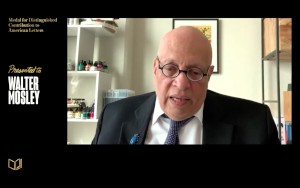 ” ‘It has been more than 30 years since I have embarked on the path that writing conjures out of almost nothing, a path wrought in the mind, a mind that is too small to contain the full scope of a project and has within it, like language itself, the full scope of experience of our species,’ Mosley (pictured) said in accepting the award, after listing off dozens of Black men of letters — from Ralph Ellison to Randall Kenan — without whom, he said, he could not be here today.
” ‘It has been more than 30 years since I have embarked on the path that writing conjures out of almost nothing, a path wrought in the mind, a mind that is too small to contain the full scope of a project and has within it, like language itself, the full scope of experience of our species,’ Mosley (pictured) said in accepting the award, after listing off dozens of Black men of letters — from Ralph Ellison to Randall Kenan — without whom, he said, he could not be here today.” ‘There’s a great weight hanging over the reception of an award when the underlying subject is “the first Black man to receive,” ‘ he said. ‘I prefer to believe that we are on the threshold of a new day, that this evening is but one of 10,000 steps being taken to recognize the potential of its nation.’
“Following Mosley’s acceptance, the Foundation aired a video in support of the Black Lives Matter movement and narrated by last year’s awards host, LeVar Burton. Through the video, the Foundation pledged its commitment to Black literature, and promised to be ‘a literary community as life-giving and rich and as varied as the stories we tell. A community of which we can all be proud. A community which unequivocally understands why Black lives matter, and that there is no American literature without the voices of the disenfranchised, the undocumented, the marginalized, and the unheard.”
Les Payne, who had been a Newsday editor and columnist, was an early president and co-founder of the National Association of Black Journalists and a thought leader for journalists of all colors. He died at 76 in 2018.
Management received a formal letter from me months ago to make my position clear: I stand with Patricia in her fight for equity. We are co-critics, we perform the same job, we should be paid equally. https://t.co/d34rajePKk
— Bill Addison (@BillAddison) November 15, 2020
L.A. Times Food Critic Alleges Pay Disparity
“Los Angeles Times food critic Patricia Escarcega denounced the newspaper in a Twitter thread on Sunday, accusing her employers of paying her significantly less than her white male counterparts,” Jeremy Fuster reported Sunday for The Wrap.
‘“Why hire the first Latinx restaurant critic in the history of the L.A. Times and then pay them so much less for doing the exact same work?’ she tweeted. “I refuse to let this discrimination stand. It is immoral, unethical, and illegal.”
“In the thread, Escarcega recounts how she filed a pay discrimination claim through the L.A. Times Guild six months ago after discovering she was being paid two-thirds of what fellow critic Bill Addison was being paid. Both Addison and Escarcega were hired two years ago to replace late longtime critic Jonathan Gold, with Addison coming to the Times after serving as the national food critic at Eater, while Escarcega came from the same position at the Phoenix New Times.
“But in the Times’ two-page response to her, Escarcega says she was told she was being paid less than Addison because she ‘did not bring prestige to the paper, and because the company says our job classifications aren’t the same,’ even though their hires were announced simultaneously and they have regularly been billed as co-critics. . . .”
The National Association of Hispanic Journalists Monday backed Escárcega. “The lack of action taken to address her case devalues the work that Latinx journalists like Escárcega bring to your newsroom and our communities” [PDF] ,NAHJ President Nora Lopez wrote to Times owner Patrick Soon-Shiong.
- Dagmar Thiel, Reynolds Journalism Institute: Gender and age discrimination play a key role in female Hispanic journalists staying at the bottom (Oct. 26)
ESPN prepared this video about Claire Smith when she entered the Baseball Hall of Fame in 2017. (Credit: YouTube)
Smith, Starks Among 300 ESPN Layoffs
Veteran sports journalists Claire Smith and Larry Starks are among the reported 300 ESPN staffers laid off in reaction to cost pressures from the COVID-19 pandemic.
Smith and Starks have been news editors since 2007. Before that, he was assistant managing editor at the St. Louis Post-Dispatch for more than eight years.
Smith has worked as a sportswriter and editor for more than 30 years at news organizations that include The New York Times, Philadelphia Inquirer, Philadelphia Bulletin and Hartford Courant.
She was the first African American female newspaper reporter to cover Major League Baseball on a daily basis, and in 2016 won the J.G. Taylor Spink Award, the top honor for a baseball writer.
Smith could not be reached for comment, but Starks, news editor for the NBA, messaged Journal-isms, “There was a group of five event news editors embedded with the sports [that] ESPN has broadcast rights deals with — NBA, MLB, NFL, college basketball and college football. It was established in 2007.
“Each of those editors, along with six other news editors in the universal news group were cut. The news editors edit scripts for all the SportsCenter shows and also [deal] with reporters whose stories go on the front page of ESPN.com. The event news editors were also part of the universal news group.”
Stephen Battaglio wrote Nov. 5 for the Los Angeles Times that ESPN was slashing 500 jobs, according to a memo from Jimmy Pitaro, president of the Walt Disney Co.-owned unit. In addition to the 300 layoffs, another 200 open positions will be eliminated, the company said. ESPN has more than 5,000 employees worldwide.
- Kristen Hare and Rick Edmonds, Poynter Institute: About 500 people are taking buyouts at Gannett
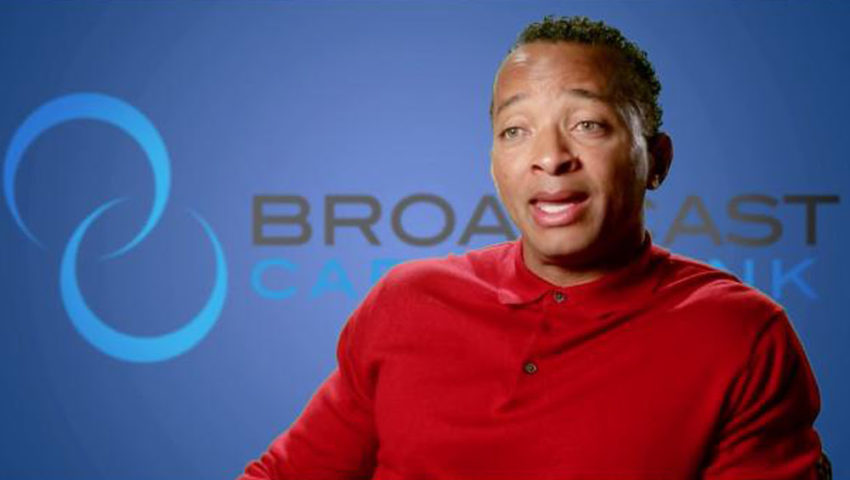
New News Network to Target the ‘Underserved’
“Multicultural News Network (MNN), a nonpartisan, national news network that will bring ‘an unbiased national forum for the voices of America’s underserved multicultural communities,’ will launch in the second half of 2021,” Mark K. Miller reported Wednesday for TVNewsCheck.
The network was founded by DuJuan McCoy, one of a handful of African American television station owners.
“MNN will produce live, daily news and other programming serving multicultural communities including, but not limited to: Blacks, Hispanics, LGBTQ communities, Asians, Native Americans, people of Middle Eastern descent and others,” Miller reported. “Much of MNN’s content will be produced and delivered by its respective multicultural community to ensure their authentic voice is being heard on a regular and national basis.
“MNN will be based in Indianapolis, in a 69,000 square foot facility — also home to Circle City Broadcasting’s WISH (CW) and WNDY (MNT [MyNetworkTV]). Additional news bureaus will be located around the country. Launch advertisers, sponsors and distribution partners will be announced in the near future.”
McCoy, owner and CEO of Circle City Broadcasting, “will serve as MNN’s chairman and CEO. MNN has also begun to forge strategic relationships with Circle City Broadcasting and Cox Media Group (CMG). MNN plans to use stations, newsrooms and news bureau resources in dozens of markets across the U.S. including Washington, D.C. . . .”
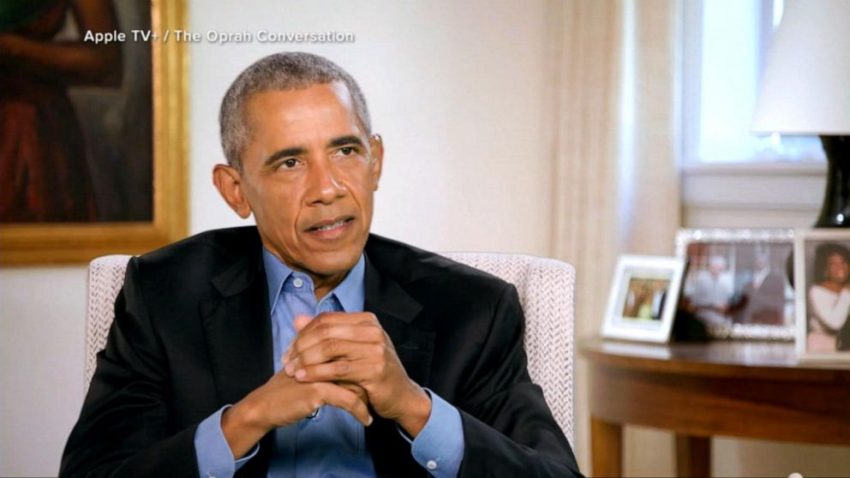
Obama Book Already Drawing Blowback
Former president Barack Obama is decrying the damage perpetrated by conservative media, weighing in on the Trump-like values absorbed by some rappers, commenting on his intellectual banter with author Ta-Nehisi Coates and saying of Donald Trump, “For millions of Americans spooked by a Black man in the White House, he promised an elixir for their racial anxiety.”
“A Promised Land,” the 768-page memoir that retails for $45 and is only the first of a projected two-book offering, is on its way to becoming the best-seller of the year.
Pre-order sales, plus first-day sales, totaled 887,000 units “in all formats and editions in the U.S. and Canada,” Penguin Random House said on Wednesday.
Obama’s assertions about journalism are already receiving blowback, however.
“I’m glad that Obama sees the mess we’re in now,” the Washington Post’s Margaret Sullivan wrote on Tuesday.
“And I heartily agree with his emphasis on local journalism and the way rampant misinformation is damaging our democracy.
“But I haven’t forgotten what happened when he was in charge,” Sullivan concluded, citing the Obama administration’s war on leakers and a lack of transparency.
On the damage encouraged by right-wing media, Obama told Jeffrey Goldberg of The Atlantic, “I come out of this book very worried about the degree to which we do not have a common baseline of fact and a common story. We don’t have a Walter Cronkite describing the tragedy of Kennedy’s assassination but also saying to supporters and detractors alike of the Vietnam War that this is not going the way the generals and the White House are telling us. Without this common narrative, democracy becomes very tough.
“Remember, after Iowa my candidacy survives Reverend [Jeremiah] Wright, and two minutes of videotape in which my pastor is in kente cloth cursing out America. And the fact is that I was able to provide context for that, and I ended up winning over a huge swath of the country that has never set foot on the South Side of Chicago and was troubled by what he said. I mean, that’s an indicator of a different media environment.
“Now you have a situation in which large swaths of the country genuinely believe that the Democratic Party is a front for a pedophile ring. This stuff takes root. I was talking to a volunteer who was going door-to-door in Philadelphia in low-income African American communities, and was getting questions about QAnon conspiracy theories. The fact is that there is still a large portion of the country that was taken in by a carnival barker.”
The 44th president also decried the commonality some rappers feel with Trump. “It’s interesting -— people are writing about the fact that Trump increased his support among Black men [in the 2020 presidential election], and the occasional rapper who supported Trump. I have to remind myself that if you listen to rap music, it’s all about the bling, the women, the money. A lot of rap videos are using the same measures of what it means to be successful as Donald Trump is. Everything is gold-plated. That insinuates itself and seeps into the culture.”
Did y’all know that me and former President @BarackObama weren’t even in the same room for this interview? He was in D.C. and I was in California. But thanks to the power of technology (and @DrewBarrymore), now I may never leave my house ? pic.twitter.com/ysNBpo7IEv
— Oprah Winfrey (@Oprah) November 19, 2020
Obama said he enjoys his dialogues with Coates. “First of all, I love Ta-Nehisi,” he told Goldberg. “I love his writing; I love him personally. He’s such a gracious, thoughtful, humble person. He’s a good-hearted person, very open-minded, trying to figure this stuff out. I think the world of him.
“I think the dialogue he and I had is one I have with myself. Being optimistic doesn’t mean that five times a day I don’t say, ‘We’re doomed.’ . . .
“The discussion I had with Ta-Nehisi typically revolved around the basic belief that, in fact, things had gotten better. This is not a cause for complacency but rather a spur to action. It doesn’t mean that things can’t get worse, either.”
Although Obama walked a fine line on racial matters while president, he is now allowing himself more freedom.
“Even as Donald Trump, the man who would eventually succeed him, incessantly peddled the racist birther lie against him, Obama seemed careful to avoid the obvious — instead dismissing, as he released his longform birth certificate in 2011, the ‘silliness’ that was being put forth by ‘sideshows and carnival barkers.’ “ Eric Lutz wrote Thursday in Vanity Fair.
“The vitriol and conspiracy theories directed against him were more than mere silliness, of course. As Obama writes in his forthcoming memoir, they were a racist reaction to his historic election, and foundation on which Trump would build his own cruel, paranoid, nativist political movement.
” ‘It was as if my very presence in the White House had triggered a deep-seated panic, a sense that the natural order had been disrupted,’ Obama writes in one of the book’s several candid discussions of race, according to excerpts reported on by CNN Thursday. ‘Which is exactly what Donald Trump understood when he started peddling assertions that I had not been born in the United States and was thus an illegitimate president.’
If you were wondering about reaction to Obama’s book from the Black left, one prominent member, Obama critic Cornel West, tweeted, “Obama’s #APromisedLand shows how he got there & left most of his people behind. It shatters any lingering illusions of him being a fighting Joshua & shows his captivity to Wall Street greed, Pentagon militarism & refusal to confront massive black social misery & U.S. poverty!”
- Joel Simon, Committee to Protect Journalists: Here’s how Biden can restore US press freedom leadership
HBO Adaptation of Coates Book Debuts Saturday
“Between The World And Me, based on Ta-Nehisi Coates’ #1 New York Times bestselling account, is coming to HBO as a special event,” the cable network announced. The adaptation debuts Saturday.
“First published in 2015, Between The World And Me was written as a letter to Coates’ teenage son, and recounts the author’s experiences growing up in Baltimore’s inner city and his growing fear of daily violence against the Black community. The narrative explores Coates’ bold notion that American society structurally supports white supremacy.
“Based on the 2018 adaptation and staging of the book at the Apollo Theater, the HBO Special will combine elements of the Apollo’s production, including powerful readings from Coates’ book, and incorporate documentary footage from the actors’ home life, archival footage, and animation.
“It will include appearances by Ta-Nehisi Coates, Mahershala Ali, Angela Bassett, Angela Davis, Alicia Garza, Tip ‘T.I.’ Harris, Jharrel Jerome, Mimi Jones, Marc Bamuthi Joseph, Ledisi, Janet Mock, Jason Moran, Joe Morton, Wendell Pierce, Phylicia Rashad, Greg Alverez Reid, Mj Rodriguez, Kendrick Sampson, Yara Shahidi, Nate Smith, Tariq ‘Black Thought’ Trotter, Courtney B. Vance, Olivia Washington, Pauletta Washington, Susan Kelechi Watson, Michelle Wilson and Oprah Winfrey. . . .”
That’s not all that Coates is up to. In a lengthy story on him posted Monday by the Washington Post, Helena Andrews-Dyer wrote, “Coates’s debut novel, ‘The Water Dancer,’ an intimate story about an enslaved Virginian man grappling with his own gifts, came out in paperback this month. Last year, the bestseller got Oprah Winfrey’s coveted anointing and brought back her book club. Last week, it was announced that Winfrey and Brad Pitt are teaming up to produce the film adaptation. Coates is now tasked with writing the screenplay.”
-
Graphic Policy: Ta-Nehisi Coates’ Final Run on Black Panther Begins in February
CNN Fills Slots Created After Floyd Killing
CNN has filled the positions on the Race & Equality and the police reporting teams it announced in July in the midst of protests over the police killing of George Floyd in Minneapolis, Jeff Zucker, president of CNN Worldwide, announced to staff members Nov. 12.
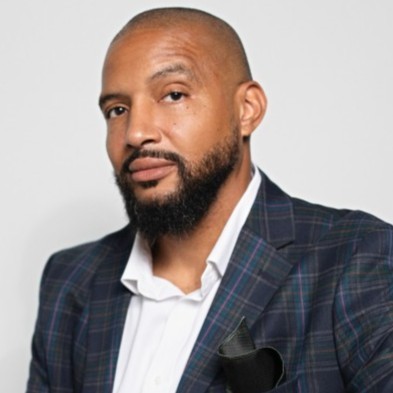 On the Race & Equality team, led by Delano Massey (pictured), a supervising producer, are Dalila-Johari Paul, a digital editor for CNN for nearly four years; Nicquel Terry Ellis, formerly of USA Today; Nicole Chavez, on CNN’s national news desk, also for nearly four years; and Priya Krishnakumar, joining CNN after six years at the Los Angeles Times. She will be data and visuals editor.
On the Race & Equality team, led by Delano Massey (pictured), a supervising producer, are Dalila-Johari Paul, a digital editor for CNN for nearly four years; Nicquel Terry Ellis, formerly of USA Today; Nicole Chavez, on CNN’s national news desk, also for nearly four years; and Priya Krishnakumar, joining CNN after six years at the Los Angeles Times. She will be data and visuals editor.
“The new Race & Equality team, led by Delano, will make CNN’s reporting on these beats richer and ensure we are leading the way in telling the many stories that need to be told across race and equality,” Zucker wrote.
“The struggles, progress and triumphs. How race is woven into every beat, including business, politics, sports, media, housing, healthcare, and education. From the lack of representation in so many industries to the still-present signals and symbols of racism, to the voices who provide solutions and inspiration.”
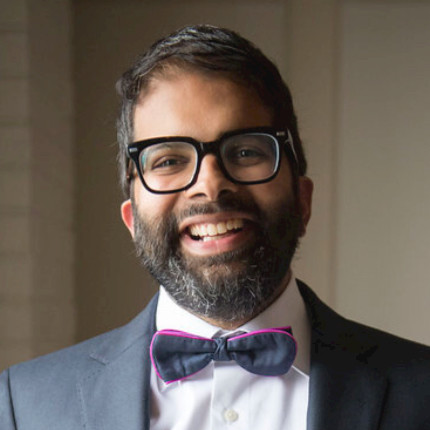 The policing team is led by Pervaiz Shallwani (pictured), senior editor, investigative-enterprise. Peter Nickeas fills a writing position there, joining CNN “after more than nine years with the Chicago Tribune where he became the expert on covering violence in the city of Chicago.”
The policing team is led by Pervaiz Shallwani (pictured), senior editor, investigative-enterprise. Peter Nickeas fills a writing position there, joining CNN “after more than nine years with the Chicago Tribune where he became the expert on covering violence in the city of Chicago.”
Zucker added, “The dedicated team will bolster policing coverage at CNN, not only raising the quality of breaking news stories that involve police but also delving into issues raised by the way police operate in America, including reform, accountability, and transparency. . . . But as we discussed this summer, not all race stories are police stories, and vice-versa.”
Both beats will report into Matthew Hilk, vice president/news and domestic managing editor at CNN, and Catherine Straight, executive editor, national news at CNN Digital.
Short Takes
(Credit: YouTube)
- “Colin Kaepernick, the former San Francisco 49ers player who famously took a knee during the national anthem as a protest against racial injustice, called Monday for the immediate release of Mumia Abu-Jamal, convicted in the 1981 shooting death of Philadelphia Police Officer Daniel Faulkner,” Julie Shaw reported Monday for the Philadelphia Inquirer. “He contended that Abu-Jamal, 66, was ‘framed’ in the killing of Faulkner by a racist police department. . . .”
- At the Gannett Co., “Hollis Towns, our Atlantic regional editor, has been promoted to second-in-command in the local news division for the USA TODAY Network,” Amalie Nash, vice president – local news at the network, announced Friday. “As vice president of local news initiatives and regional editor, Hollis will oversee several of our regions and help set the strategy and priorities for the local news division. He will work closely with our newsrooms and their leaders on a daily basis, helping to guide them to success. He’ll also oversee specific projects and will work closely with our partners in other divisions.”
 Russell Contreras (pictured) , Associated Press correspondent in New Mexico and part of the AP’s race-reporting team, has left for Axios but is remaining in New Mexico. “Russell is our subject matter expert on race and justice and will be contributing regularly to Mike Allen’s AM,” Axios spokesperson Yolanda Brignoni messaged Journal-isms. “He will be working with the politics team to cover issues of race and the justice system and to bring his depth of experience covering immigration issues to the Axios audience. Russell will also help lead reporting of our year-long systemic racism series, Hard Truths. We are very excited to have him on the team!”
Russell Contreras (pictured) , Associated Press correspondent in New Mexico and part of the AP’s race-reporting team, has left for Axios but is remaining in New Mexico. “Russell is our subject matter expert on race and justice and will be contributing regularly to Mike Allen’s AM,” Axios spokesperson Yolanda Brignoni messaged Journal-isms. “He will be working with the politics team to cover issues of race and the justice system and to bring his depth of experience covering immigration issues to the Axios audience. Russell will also help lead reporting of our year-long systemic racism series, Hard Truths. We are very excited to have him on the team!”
- “ ‘Count every legal vote’ sounds like a good, rule-abiding idea,” The Angry Grammarian, otherwise known as Jeffrey Barg, wrote Nov. 11 for the Philadelphia Inquirer. “Too bad it’s also racist. Even before Donald Trump lost, he and his supporters settled on ‘count every legal vote’ as their mantra — at least in cities like Philadelphia, Detroit, and Atlanta, all of which have a plurality if not a majority of Black residents. It’s a crucial difference from ‘count every vote.’ . . .”
- “Who’s reaching the C-suite in 2020? A new analysis by LinkedIn’s Economic Graph team shows the fastest-growing ‘chief’ titles of this year,” according to LinkedIn News, referencing its Thursday story by George Anders. “Chief diversity officer tops the list: Hiring for the title has grown about 84% as a proportion of total C-suite hires this year, relative to 2019’s share. While that’s the fastest expansion of any C-suite job this year, the title itself is still relatively uncommon in corporate America, accounting for less than half of 1% of all C-suite hires. . . .”
- One of the many Black women across movements and industries who worked for the election of Joe Biden and Kamala Harris, Angelica “Angie” Nwandu, the CEO and founder of The Shade Room, stands out, Hanaa’ Tameez wrote Nov. 11 for Nieman Lab. “The Shade Room, a media company focused on Black culture that started out as a celebrity news site, is incredibly popular. Nwandu, an accountant at the time, founded it in 2014 because she loved celebrity gossip, but quickly realized that it would become more than just a side hustle. Today, it has 5.1 million likes on Facebook and more than 21 million Instagram followers, who are known as ‘the roommates.’ . . .”
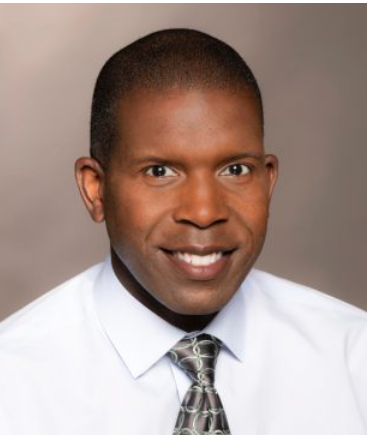 “CBS News has promoted Dell Alann (pictured) to Los Angeles Deputy Bureau Chief,” Alexandra Del Rosario reported Tuesday for Deadline. “The news network announced the move Tuesday. ‘He has great knowledge and contacts around the region and the network,’ said CBS News West Coast bureau chief Mark Lima, who was named to that post in August. ‘He runs an efficient and responsible desk, and he is a tireless worker.’ . . .”
“CBS News has promoted Dell Alann (pictured) to Los Angeles Deputy Bureau Chief,” Alexandra Del Rosario reported Tuesday for Deadline. “The news network announced the move Tuesday. ‘He has great knowledge and contacts around the region and the network,’ said CBS News West Coast bureau chief Mark Lima, who was named to that post in August. ‘He runs an efficient and responsible desk, and he is a tireless worker.’ . . .”
- “ProPublica announced on Monday six local reporters who have been selected as the inaugural members of the ProPublica Distinguished Fellows program,” the investigative website reported. “The program will fund the reporters’ salaries and benefits for three years as they produce important investigative projects from their home newsrooms on topics affecting their communities.” The six are Kyle Hopkins, special projects editor of the Anchorage Daily News; Molly Parker, reporter for The Southern Illinoisan in Carbondale, Ill.; Rob Perez, investigative reporter at the Honolulu Star-Advertiser; Jennifer Smith Richards, reporter at the Chicago Tribune; Wendi C. Thomas, editor and publisher of Memphis-based MLK50: Justice Through Journalism; and Ken Ward Jr., longtime investigative reporter in West Virginia.
- “BET’s sharp and persuasive documentary ‘Smoke: Marijuana + Black America’ is undaunted by the enormous tasks it sets out for itself, not the least of which is to describe a certain profound link between pot and daily existence,” Hank Steuver wrote Tuesday for The Washington Post. The film, airing Wednesday night, is equal parts love story, tragedy and outrage — a cultural history running parallel to the nation’s systemic and hypocritical racism in more ways than some viewers (and marijuana users) may want to admit. . . .” The documentary can still be viewed online.
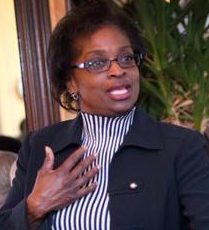 “President-elect Joe Biden has tapped his FCC transition team and it includes several FCC vets including one of the leading candidates for the chairmanship, former commissioner and acting chair Mignon Clyburn (pictured, by Sharon Farmer, sfphotoworks),” John Eggerton reported Tuesday for Broadcasting & Cable. “Clyburn’s father, Rep. James Clyburn (D-S.C.) helped jump-start Biden’s then-flagging campaign with his endorsement. . . .”
“President-elect Joe Biden has tapped his FCC transition team and it includes several FCC vets including one of the leading candidates for the chairmanship, former commissioner and acting chair Mignon Clyburn (pictured, by Sharon Farmer, sfphotoworks),” John Eggerton reported Tuesday for Broadcasting & Cable. “Clyburn’s father, Rep. James Clyburn (D-S.C.) helped jump-start Biden’s then-flagging campaign with his endorsement. . . .”
- CNN photojournalist Eddie Gross has won this year’s Jerry Thompson Memorial Award, named after the late CNN photojournalist, the Radio and Television Correspondents Association announced, John Eggerton reported Monday for Broadcasting & Cable. “Eddie embodies the ideals of the Jerry Thompson Award for his hard work, selfless demeanor, constant smile, and most importantly being a friend to all,” the organization said.

- Jemele Hill, a contributing writer for The Atlantic, is one of “Adweek’s Most Powerful Women in Sports: 31 MVPs Showing Brands and Fans the Way to Win,” T.L. Stanley wrote Sunday. for Adweek. The “veteran reporter speaks her mind, unapologetically and fiercely, on issues far beyond the playing field. . . . : Hill will produce a docuseries on Colin Kaepernick as part of the former football star’s deal with Disney, an alliance she says signals ‘a significant culture change.’ “
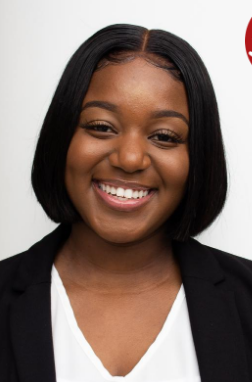 The Radio Television Digital News Foundation today named East Dockery [pictured) the 2020 Ed Bradley Scholar, the group said Nov. 11. “East Dockery is a junior at North Carolina A&T State University. She is majoring in journalism and mass communications with a concentration in multimedia. East has worked for ESPN’s The Undefeated as a 2019-20 Rhoden Fellow where she reported and wrote stories about professional and college athletes. . . .”
The Radio Television Digital News Foundation today named East Dockery [pictured) the 2020 Ed Bradley Scholar, the group said Nov. 11. “East Dockery is a junior at North Carolina A&T State University. She is majoring in journalism and mass communications with a concentration in multimedia. East has worked for ESPN’s The Undefeated as a 2019-20 Rhoden Fellow where she reported and wrote stories about professional and college athletes. . . .”
- “This week, I started work as the new director of audience engagement and trust for Gannett’s USA Today Network,” Cynthia Benjamin, emerging audiences editor for the Democrat and Chronicle in Rochester, N.Y., wrote Saturday.
I am SO #thankful me and my @FOX46News #photojournalist, @JonMonteFOX46 are okay. I’m sending #prayers up to the people of #Alexander #County impacted by today’s #flooding. pic.twitter.com/9KxABhpQyB
— Amber Roberts (@AmberFOX46) November 13, 2020
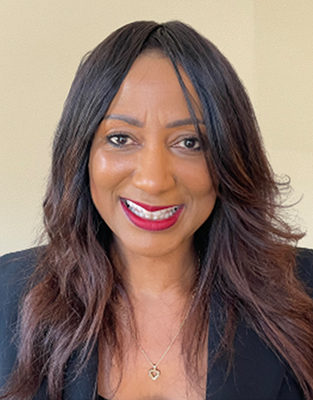 Veteran news executive Susan Leath [pictured) will serve as chief operating officer for the GroundTruth Project, the organization announced Thursday. She will be “responsible for coordinating operations and guiding a growing staff in the build of GroundTruth’s award-winning global reporting initiatives and in expanding its national service program, Report for America, which now supports 225 reporters in more than 160 newsrooms across the United States.”
Veteran news executive Susan Leath [pictured) will serve as chief operating officer for the GroundTruth Project, the organization announced Thursday. She will be “responsible for coordinating operations and guiding a growing staff in the build of GroundTruth’s award-winning global reporting initiatives and in expanding its national service program, Report for America, which now supports 225 reporters in more than 160 newsrooms across the United States.”
- “BuzzFeed is building out its Black Culture brand Cocoa Butter into more of a standalone business,” Tim Peterson reported Friday for digiday. “On Oct. 20, the publisher launched a YouTube channel for Cocoa Butter, and later this month the brand will debut its first weekly email newsletter. . . .”
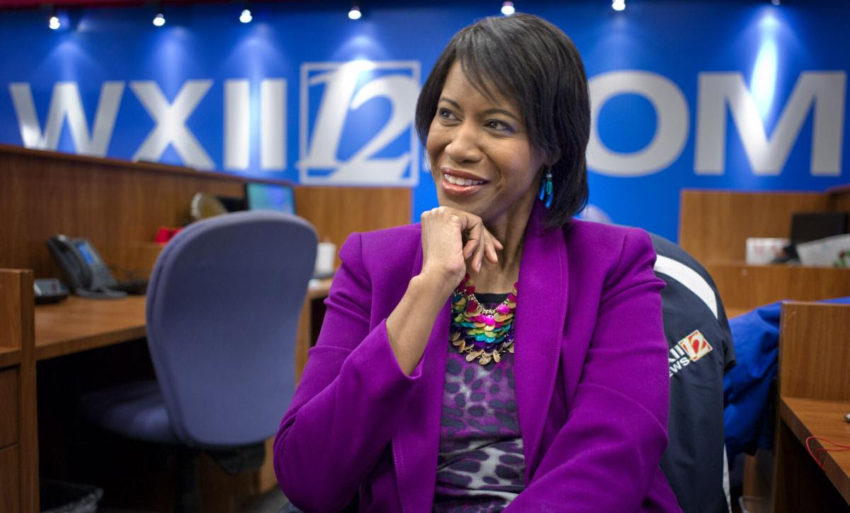
“When I first arrived in the Triad in 1988, you would see me on the air standing out in the cold, the snow, the rain, the sleet – whatever – and you would sometimes call me on the phone and say, ‘Margaret, put a hat on,’ or ‘Margaret, you need to put on a bigger coat,’ “ Johnson said.
- “Veteran news reporter and anchor Margaret Johnson is retiring after 32 years with television station WXII in Winston-Salem, telling viewers and fans on Facebook live that her last broadcast will be at noon on Friday,” Wes Young reported Nov. 11 for the Winston-Salem (N.C.) Journal. “Johnson said the ‘stories of miracles in peoples’ lives’ were her favorite kind of story to do during her years at Channel 12, and she has a miracle story of her own: Johnson battled pancreatic cancer in 2005 and beat it with the help of God, she said during her Wednesday announcement. . . .”
- “When journalists are targeted, ‘societies as a whole pay a price’, the UN chief said on [Nov. 2], the International Day to End Impunity for Crimes against Journalists,” the United Nations reported. ” ‘If we do not protect journalists, our ability to remain informed and make evidence-based decisions is severely hampered,’ Secretary-General António Guterres spelled out in his message for the day. And when they cannot safely do their jobs, ‘we lose an important defense against the pandemic of misinformation and disinformation that has spread online’, he added. . . .”
- “In the last 48 hours, agents of the State Security of the Ministry of the Interior of Cuba (Minint), a feared apparatus that acts as political police of the communist regime of Havana, unleashed a wave of arrests of opponents and human rights activists, sources of Cuban dissidence denounced today, the LatAm Journalism Review reported Monday, citing El Universal in Mexico. The story also said, “Independent or non-official journalists, human rights defenders, artists, musicians, writers and other dissidents were victims of the operation […].”
- “Nigerian authorities should ensure a credible and transparent investigation into the death of journalist Onifade Emmanuel Pelumi, a reporter with the independent online Gboah TV broadcaster, and hold those responsible to account,” the Committee to Protect Journalists said Nov. 13. “Pelumi, 20, was last seen alive on October 24 in custody of police officers in southwestern Lagos State after he went to cover attempted robbery by unidentified youths at a government facility in the state capital Ikeja, according a family friend of Pelumi. . . .”
To subscribe at no cost, please send an email to journal-isms-subscribe@yahoogroups.com and say who you are.
Facebook users: “Like” “Richard Prince’s Journal-isms” on Facebook.
Follow Richard Prince on Twitter @princeeditor
Richard Prince’s Journal-isms originates from Washington. It began in print before most of us knew what the internet was, and it would like to be referred to as a “column.” Any views expressed in the column are those of the person or organization quoted and not those of any other entity. Send tips, comments and concerns to Richard Prince at journal-isms-owner@yahoogroups.com
View previous columns (after Feb. 13, 2016).
- Diversity’s Greatest Hits, 2018 (Jan. 4, 2019)
- Book Notes: Is Taking a Knee Really All That? (Dec. 20, 2018)
- Book Notes: Challenging ’45’ and Proudly Telling the Story (Dec. 18, 2018)
- Book Notes: Get Down With the Legends! (Dec. 11, 2018)
- Journalist Richard Prince w/Joe Madison (Sirius XM, April 18, 2018) (podcast)
- Richard Prince (journalist) (Wikipedia entry)
- February 2018 Podcast: Richard “Dick” Prince on the need for newsroom diversity (Gabriel Greschler, Student Press Law Center, Feb. 26, 2018)
- Diversity’s Greatest Hits, 2017 — Where Will They Take Us in the Year Ahead?
- Book Notes: Best Sellers, Uncovered Treasures, Overlooked History (Dec. 19, 2017)
- An advocate for diversity in the media is still pressing for representation, (Courtland Milloy, Washington Post, Nov. 28, 2017)
- Morgan Global Journalism Review: Journal-isms Journeys On (Aug. 31, 2017)
- Diversity’s Greatest Hits, 2016
- Book Notes: 16 Writers Dish About ‘Chelle,’ the First Lady
- Book Notes: From Coretta to Barack, and in Search of the Godfather
- Journal-isms’ Richard Prince Wants Your Ideas (FishbowlDC, Feb. 26, 2016)
- “JOURNAL-ISMS” IS LATEST TO BEAR BRUNT OF INDUSTRY’S ECONOMIC WOES (Feb. 19, 2016)
- Richard Prince with Charlayne Hunter-Gault,“PBS NewsHour,” “What stagnant diversity means for America’s newsrooms” (Dec. 15, 2015)
- Book Notes: Journalists Follow Their Passions
- Book Notes: Journalists Who Rocked Their World
- Book Notes: Hands Up! Read This!
- Book Notes: New Cosby Bio Looks Like a Best-Seller
- Journo-diversity advocate turns attention to Ezra Klein project (Erik Wemple, Washington Post, March 5, 2014)
.

